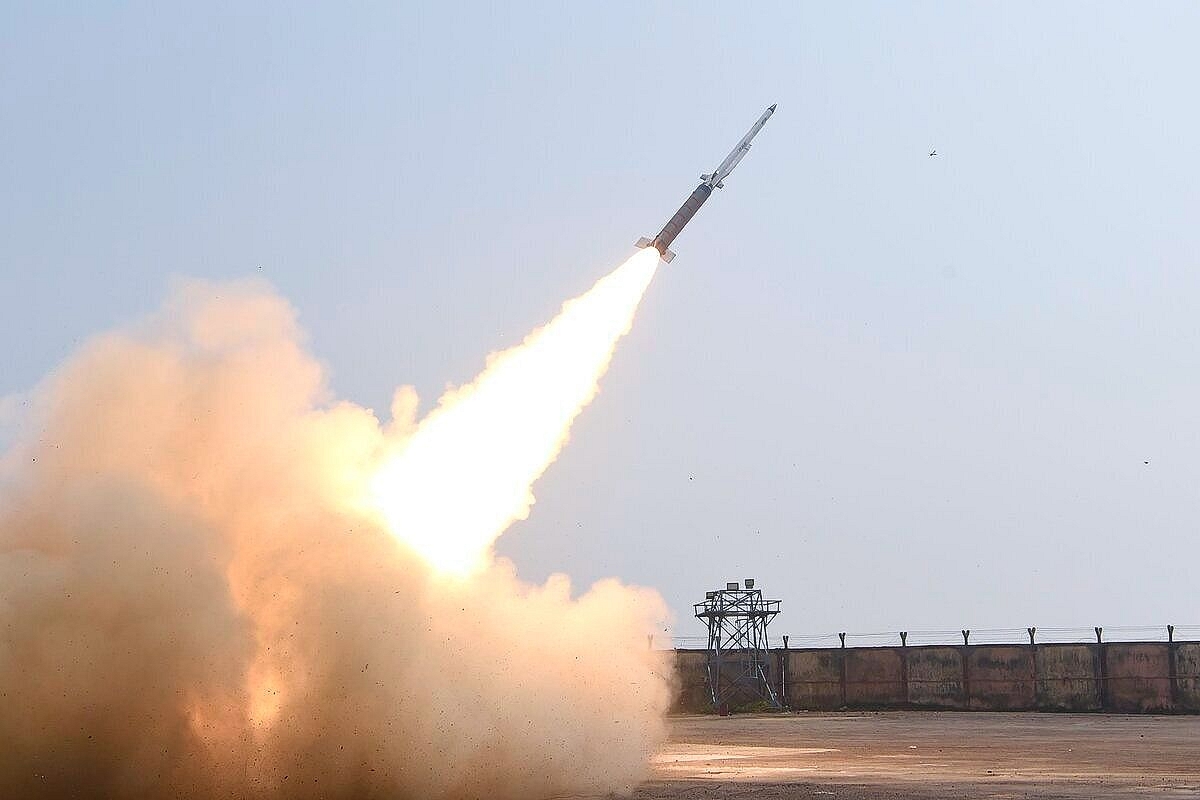India Tests SFDR Technology Critical For Development Of Long Range Air-To-Air Missiles
The Defence Research and Development Organisation (DRDO) tested its Solid Fueled Ducted Ramjet (SFDR) technology for the fourth time with a demonstration flight earlier today,
Livefist has reported.
The development of SFDR technology will enable India to make its own long-range air-to-air missile, which could mirror the capabilities of the best missiles in this class, like MBDA’s Meteor, which the Indian Air Force uses on its Rafales.
The last test of the technology was conducted in March 2021. The test, DRDO said back then, helped prove many technologies and sub-systems, including the ground booster motor and nozzle less motor.
"Successful demonstration of Solid Fuel based Ducted Ramjet technology has provided DRDO with a technological advantage which will enable it to develop long range air-to-air missiles. At present, such technology is available only with a handful of countries in the world. During the test, air launch scenario was simulated using a booster motor. Subsequently, the nozzle-less booster accelerated it to the required Mach number for Ramjet operation," the Ministry of Defence had said in a
statement released after the test.
India has been working on the Mark-II version of home grown Astra air-to-air missile, which will have a range of around 160 kilometer. The SFDR propulsion system, which was also tested in 2019, is critical for the missile’s performance in the terminal phase of its flight towards the target.
The Meteor missile also depends on its
ramjet propulsion for “more energy to maneuver during the endgame of the engagement”.
“The ramjet motor [propulsion system] provides the [Meteor] missile with thrust all the way to target intercept, providing the largest No-Escape Zone of any air-to-air missile,” the literature on the missile on MBAD website reads.
While the DRDO’s plan for Astra Mark-II is to mirror the performance of MBDA’s Meteor missile, it may take a few more years to reach there, experts say.
The development of the Astra missile began in 2001.
The Mark-I version of the missile was tested for the first time in May 2003. Since then, Astra Mark-I has been test-fired multiple times, and has been integrated with Su-30 MKI. In September 2019, the missile, test-fired from an Su-30MKI of the IAF, hit a target 90 kilometer away. The air-to-air missile has already been ordered in large numbers for the Indian Air Force and the Indian Navy.
India is currently developing a 160-km range version of the Astra air-to-air missile.
swarajyamag.com

